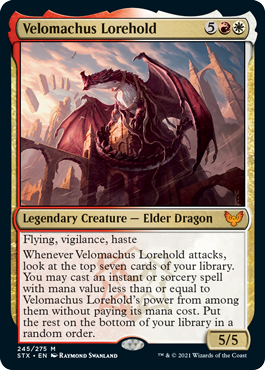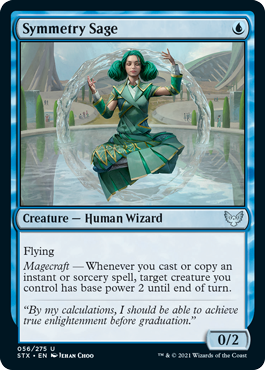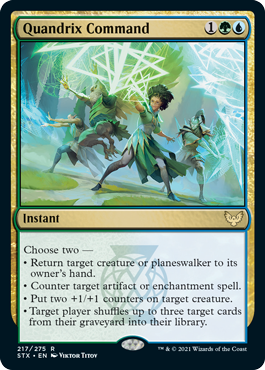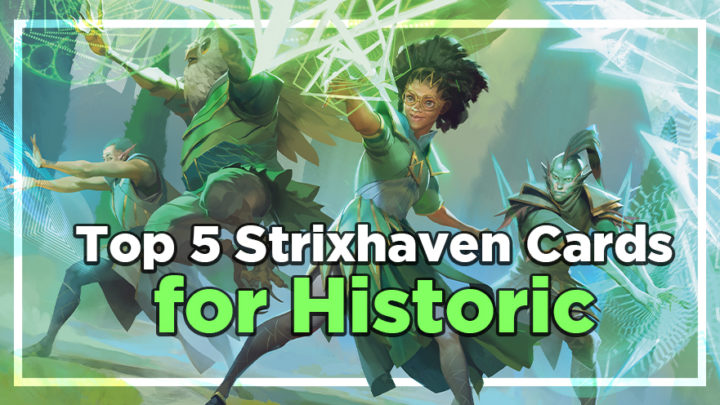Welcome back! Ally is out crushing the MPL and Rivals League Weekend, so I’m stepping in to talk about some Strixhaven cards that are going to shake up the Historic format. Yesterday, I covered five key Strixhaven cards for Standard, and there might be a little bit of crossover between the two lists.
Velomachus Lorehold

When I started thinking about Strixhaven cards I’d like to play in Historic, this is the first one that came to mind. Velomachus Lorehold might be the best reanimator target in the format. Seven mana is a bit much to ask if you’re not winning the game the turn you attack with it, but for the cost of Unburial Rites, it’s a much more exciting card.
Velomachus benefits from the addition of Mystical Archive to Historic more than any other card in this set. Thanks to cards like Faithless Looting and Brainstorm, you can set up to bring back your Velomachus consistently with Unburial Rites. After that, you can fill your deck with ways to take extra combat steps. Cards like Time Warp are hits off Velomachus that will allow you to continue attacking and chunking away at life totals.
And that’s just one approach to this card! You could also use cards like God-Pharaoh’s Gift to get Velomachus into play and start triggering its ability. God-Pharaoh’s Gift decks have been competitive in the past, and this might be the card they’ve been missing.
Any way you look at it, Velomachus Lorehold is looking to completely redefine combo decks in Historic, and I, for one, am excited to see what this card brings.
Magma Opus

This card is very novel and does so much, but at eight mana, will it see play in Historic? If you ask me, it mostly comes down to the last line of text. Magma Opus’s ability to create a Treasure means we can easily get this in the graveyard. From there, there’s some busted stuff you can do with cards like Mizzix’s Mastery, but I’m much more interested in using this card with Torrential Gearhulk.
At the Kaldheim Championship, Andrew Cuneo had success with a Blue-Black Control deck whose only win condition was Torrential Gearhulk. I think a Blue-Red Control deck built with a similar goal in mind could be very effective. This deck would have more ways to close out the game thanks to Magma Opus; even if you don’t draw your Gearhulk, Magma Opus will likely stabilize the game if you get to cast it.
Prolonging the game has proven to be a fairly easy task for control decks in Historic. Winning the game is the part they tend to struggle with. With Magma Opus, control decks have a new win condition that attacks on several angles in and of itself.
Symmetry Sage

Mono-Blue Tempo has been putting up fairly good results in Historic recently, and this next card slots right into that deck. While the deck isn’t necessarily lacking one-drops, the ones it has are often fragile, even with a Curious Obsession on them. In a format like Historic, where dealing two damage to a creature is much easier than dealing three, a 1/3 Sage wearing a Curious Obsession will allow you to safely accumulate card and board advantage.
Symmetry Sage is also a Wizard, which is big game when cards like Wizard’s Retort are staples of the deck. Mono-Blue now has eight good one-drops that all help enable Retort.
In fact, I wouldn’t be surprised if we see the emergence of a new archetype because of this card: Blue-Red Tempo. While many players are looking at Arclight Phoenix as the blue-red deck of choice, Symmetry Sage offers a more aggressive tribal Wizards angle. Between this card and Soul-Scar Mage, you have eight one-drops that are good at beating down early and that enable Wizard’s Retort and Wizard’s Lightning. Sage’s ability to buff creatures’ power also works nicely with prowess as a way to get an additional point of damage in; prowess will add power, and Sage changes base stats, so the two effects compound.
This may not be the flashiest card in the set, but as we discussed in last week’s Going Off, this “blue Goblin Guide” is much better than it looks!
Quandrix Command

This card is one of the trickier ones to evaluate. It has a lot of modes, and getting the full value out of it won’t always be easy. I expect it to see marginal play in blue-green aggressive decks as a sort of catch-all, but I have much loftier goals in mind.
The key to unlocking Quandrix Command’s potential lies in the oft-overlooked fourth mode: “Target player shuffles up to three target cards from their graveyard into their library.” This immediately had me thinking about Taking Turns decks (which Ally Warfield covered in her article last week). I just want to shuffle three Time Warps into my deck the first time I cast this card, and then shuffle in two Time Warps and a Quandrix Command the second time. At that rate, you can loop through your deck as many times as you want, which truly captures that “Nexus of Fate” feeling that some players have been missing in Historic.
Once your deck is just full of Time Warps and Quandrix Commands, winning the game becomes a simple task. You can put Tamiyo, Collector of Tales into your deck, wait to draw it, then name Time Warp and draw all four copies. From there, you can set up some extra turns, then -3 your Tamiyo to grab whatever you need out of your graveyard (most likely a Nissa, Who Shakes the World). Take all the turns, keep turning all your lands into creatures, and then ultimate your Nissa. These are all cards that you probably wanted in your deck in the first place, and they work incredibly well together.
Mavinda, Students’ Advocate

It’s fitting that this Historic article ends with the card we started with when we talked about Standard cards yesterday. To recap, I mentioned the utility of “fight” cards like Blizzard Brawl that allow you to use Mavinda’s ability reactively, as well as spells like Defiant Strike that provide card advantage. Historic takes both these principles and supercharges them. Thanks to the wider pool of cards available, you don’t have to stretch your mana quite as much as you would in Standard.
Reckless Rage is a great answer to opponents’ creatures that dodges the eight mana clause on Mavinda. We still have Defiant Strike in this format, but we also have Gods Willing as a way to filter through cards and keep our creatures alive.
If this strategy sounds familiar to you, it’s because these cards are all part of the Feather deck that has been a fringe player in Historic. With Mavinda around, that could change. Not only does Mavinda give us another way to trigger heroic, but her effect will allow you to put the spell back into your hand. Early in the game, you can cast spells to your heart’s content with no real fear of running out in the mid-to-late game. With the help of some other cards from Strixhaven like Clever Lumimancer and Leonin Lightscribe, Feather decks could be much larger players in the Historic format going forward.
***
Historic has been one of the most interesting formats when it comes to brewing, and Strixhaven will give players even more exciting options. What card in today’s article excited you the most? Tweet me at @masoneclark and let me know!

Mason Clark is a grinder in every corner of the game who has played at the pro level and on the SCG Tour with Team Nova. Whether he’s competing in Standard, Historic or Modern, Mason plays with one goal in mind: to be a better player than he was the day before. Check out his podcast, Constructed Criticism, and catch his streams on Twitch.

